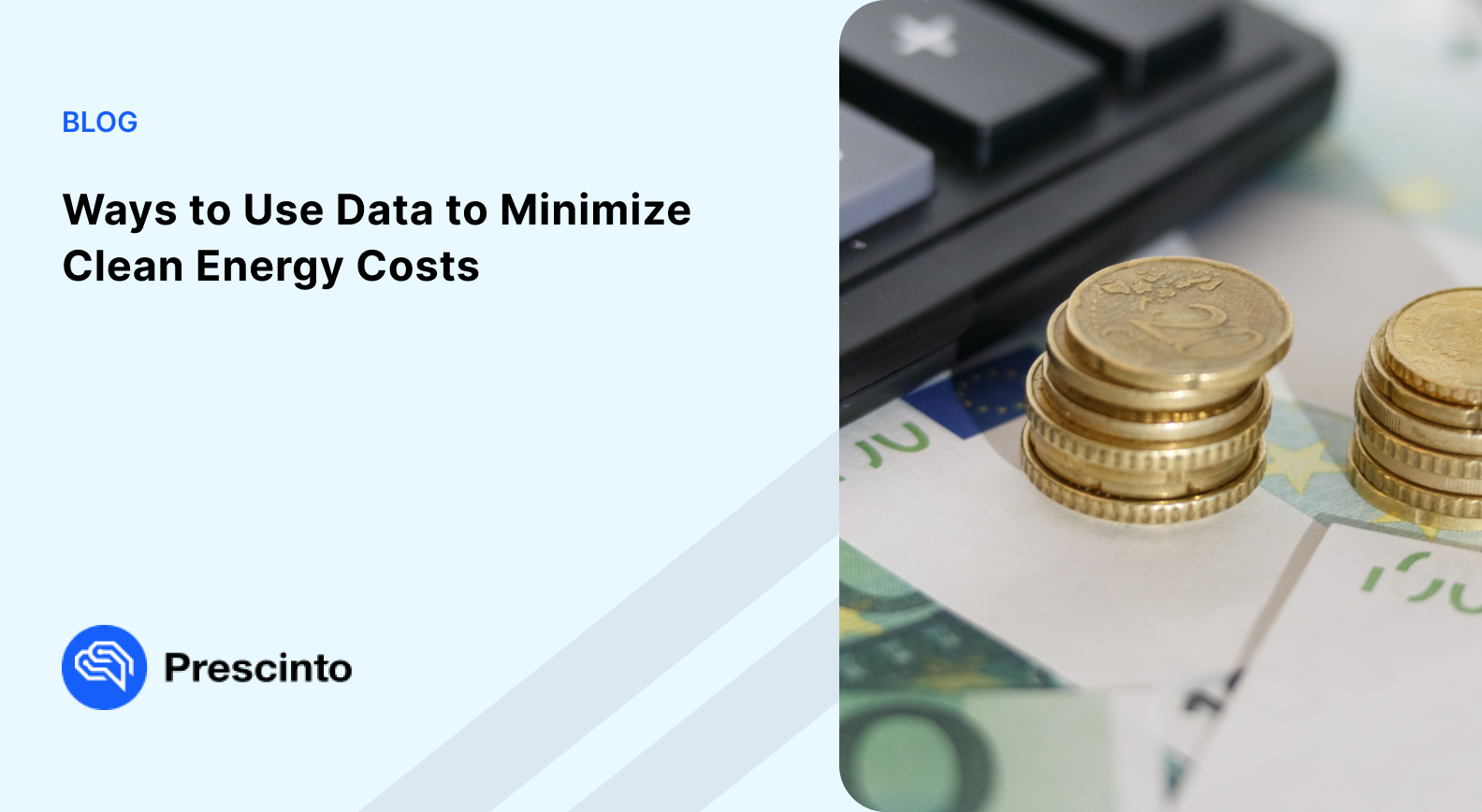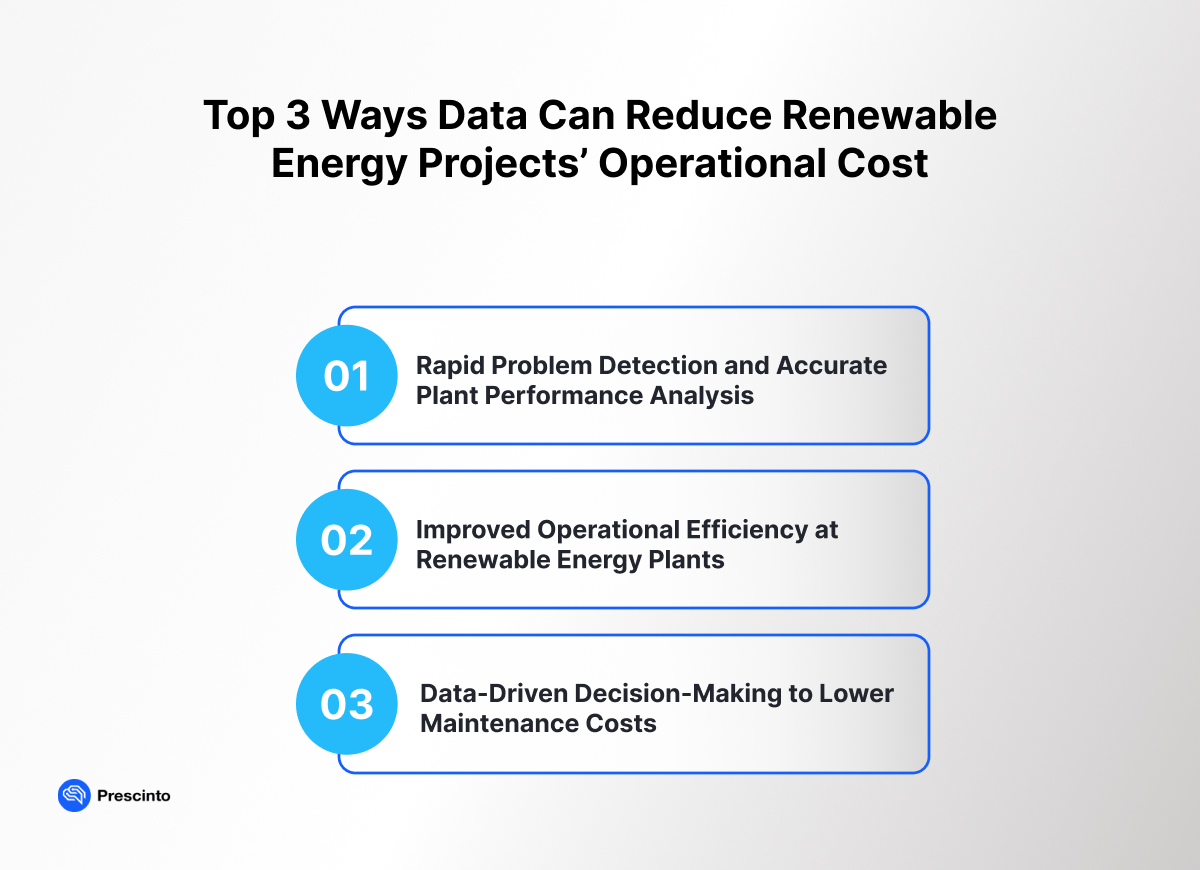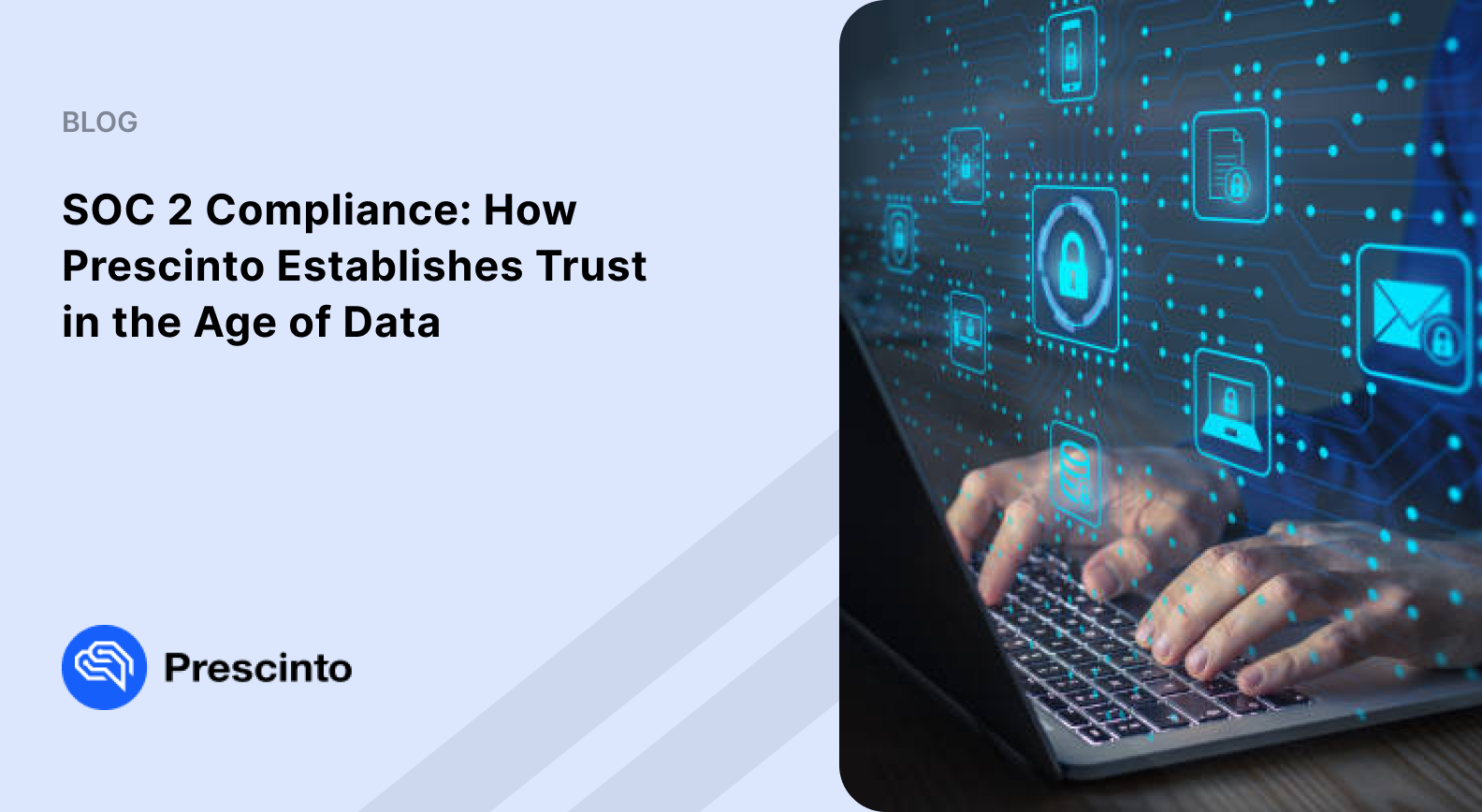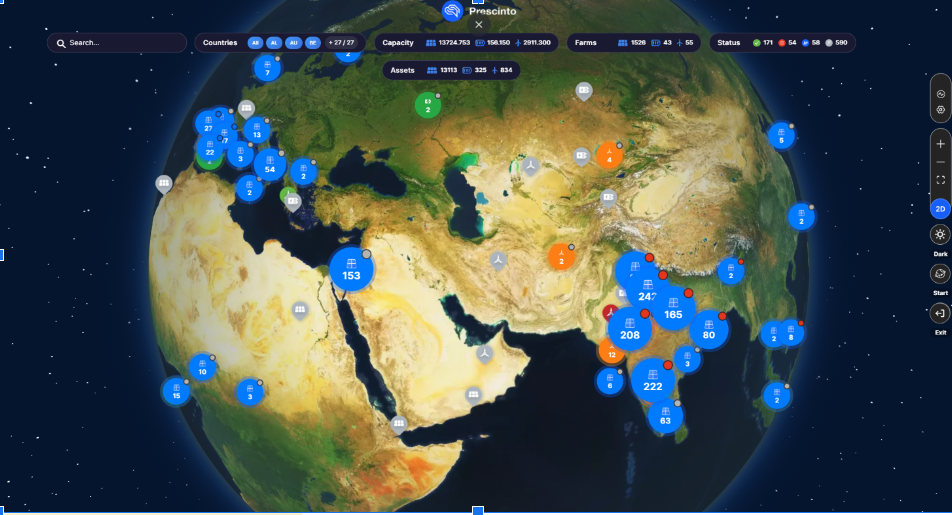3 Ways to Use Data to Minimize Clean Energy Costs

- February 4, 2024
- Prescinto
3 Critical Data Challenges in Renewable Energy APM
Data has been a critical hurdle for the renewable energy industry. A majority of renewable energy projects have data quality below 70%. Here are the top 3 data-related problems faced by the industry when it comes to asset performance management (APM).
Data Integration Complexity
The renewable energy industry’s data challenges stem from the diversity of original equipment manufacturers (OEMs). They all do things their way when it comes to recording data and sharing it. Different components and systems within a plant may employ varying data formats and communication protocols, posing difficulties in seamless integration and interoperability. Furthermore, when projects change ownership, ensuring access to historical data from various OEMs and stakeholders becomes even more complex.
Lack of Data Quality and Standardization
Ensuring data accuracy and consistency can be difficult, especially in projects involving various equipment vendors and data sources. Renewable energy projects frequently involve a multitude of equipment vendors and data sources, which can introduce a host of complexities. Inconsistencies in data formats, instances of missing data, and occasional data errors can emerge. Such issues hinder effective data analysis and decision-making and harm efforts to reduce operational costs.
Time-Consuming and Error-Prone Manual Data Analytics
Inconsistent and poor-quality data poses yet another challenge – resources spending their valuable time on the wrong alarms, eventually leading to errors in finding problems with equipment. Due to such errors, it becomes difficult to prioritize issues that can be fixed immediately. Thus, these errors subsequently lead to an increase in downtime, lower power generation, and higher operational costs.
Addressing these data-related hurdles is crucial for the clean energy industry to achieve its goals of optimizing renewable energy assets and reducing costs.
Effective data management with a data-driven culture at the core of the organization, emphasizing data quality and governance, and implementing data quality checks can contribute to resolving some of these issues.
Top 3 Ways Data Can Reduce Renewable Energy Projects’ Operational Costs
Let’s take a look at the top 3 data strategies in asset performance management (APM) that enable renewable energy projects to proactively manage assets, minimize downtime, and improve performance, ultimately leading to reduced operational costs and increased profitability.

Rapid Problem Detection and Accurate Plant Performance Analysis
High-quality data ensures that the information collected is precise and free from errors. This accuracy is essential for gaining meaningful insights and conducting in-depth analysis of asset performance. Accurate data forms the foundation for making informed decisions.
Prescinto’s data governance module, Baikal, offers an overview of the data quality and availability of data at individual plants. It also provides a comprehensive view of the entire renewable energy portfolio. Baikal, thus, allows users to quickly identify plants that may have data quality issues and take necessary actions to improve their performance. Accurate insights driven by high-quality data enable users to easily identify patterns and anomalies in plant performance. With such accurate insights, asset managers, operators, and OEMs can plan corrective maintenance to improve plant performance, reduce downtime, and decrease O&M costs through a proactive approach.
Improved Operational Efficiency at Renewable Energy Plants
Dirty data includes errors, inaccuracies, incompleteness, inconsistencies, and duplications. The top three factors that contribute to the generation of dirty data are user mistakes, poor interdepartmental communication, and inadequate data strategies. It also becomes an expensive problem, costing businesses around 15-25% of their revenue, according to ADP. Baikal’s automation of data quality checks helps organizations increase efficiency by reducing the need for manual data cleaning and analysis.
Continuous monitoring and analysis of operational data also help identify underperforming assets or inefficiencies in the energy generation process. By optimizing equipment and system performance, you can increase energy production and operational efficiency, resulting in cost savings.
Data-Driven Decision-Making to Lower Maintenance Costs
By analyzing historical and real-time data, maintenance plans can be scheduled more precisely. This leads to optimized maintenance schedules, reduced downtime, and lower maintenance costs. Moreover, with reliable data, resources, such as maintenance personnel, spare parts, and equipment, can be allocated where they are needed most, preventing overallocation and reducing operational costs. A study by Harvard Business Review showed that data-driven companies are more profitable than their peers.
To establish a data-driven APM strategy, Baikal offers a comprehensive data management experience with multiple views. The portfolio view allows users to assess data quality and availability across their entire portfolio, empowering them to prioritize improvements where they matter most. For a more granular perspective, the plant view provides insights into individual plants and device classes. Users can analyze trends and plan corrective maintenance in the day view, focusing on preferred parameters. Lastly, the heat map view offers a dynamic visualization of data, highlighting deviations from ideal conditions across multiple parameters, making it a valuable tool for identifying and addressing issues effectively and enabling data-driven decision-making.
Renewable energy companies can make informed decisions based on data insights. Data analytics can be utilized to identify trends, patterns, and areas for improvement in asset performance. Thus, data-driven decision-making can lead to more efficient resource allocation, reduced operational risks, and enhanced overall project profitability.
- Topics: APM, Data governance
About Author





